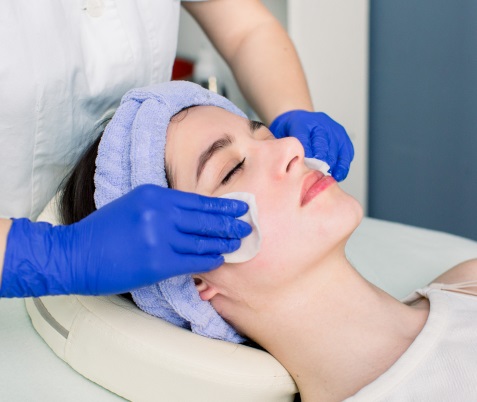This page is dedicated to the salon and hairstyling profession, offering insights into licensure, associations, and educational opportunities for aspiring stylists. Hair stylists are professionals who help clients maintain or transform their hair to look their best for events like interviews, first dates, and more. Skilled in treatments such as coloring, extensions, and perms, most stylists hold a license and provide expert advice on beauty products suited to individual needs. Read on to learn more about this creative and rewarding career path.
Many hairstylists work in salons or spas, often renting space in exchange for shared resources like marketing. This profession involves close interaction with clients, leading to long-term relationships and loyal repeat business, sometimes spanning generations. As their careers progress, stylists often specialize in areas like curly hair or hair coloring, which helps them build a dedicated clientele. Many eventually open their own salons or work independently, serving clients in personal or rented spaces.
Why Become a Hair Stylist?
There are many reasons to become a hair stylist. The first reason is often a desire to help people look their best. Those who gravitate to fashion magazines and who have a passion for fashion may be particularly well-suited to the field. It’s also a great job for those who have a gift for gab and who can work in close contact with the public as a primary function of their full-time career.
The field of cosmetology is also terrific for those who have an entrepreneurial spirit. Hair stylists are most often independent contractors who rent their space from a salon owner. Not surprisingly, many of them develop their clientele and skill sets and open their own shops. It’s also relatively easy to get started as a stylist. While many states do require a license that is earned because of cosmetology school, the barrier to entry in those schools is relatively small.
Steps to Become a Hairstylist
Step 1: Education Requirements
Becoming a hairstylist requires minimal education—only a high school diploma or GED. Training, typically through a cosmetology school or vocational program, usually takes less than a year to complete.
Some community colleges and vocational schools offer an associate degree in applied arts, which can provide credits toward a bachelor’s degree and useful courses like accounting, marketing, and communication. While these skills help stylists excel in business, most states only require the completion of a cosmetology, esthetics, or nail technology program for licensures.
Students should check their state’s cosmetology board to ensure their education meets licensure requirements. Most schools prominently display credentials, and state-supported colleges or vocational schools typically meet licensing standards.
Step 2: Internship or Apprentice
An internship or apprentice program is invaluable in many trades. While that terminology may not be found in the cosmetology field, aspiring stylists often can practice their trade prior to entering the working world. In fact, many schools of cosmetology offer reduced-rate styling and haircuts to the general public so that students can practice. Prior to that, students work on wigs to get a feel for various styles, hair types, etc.
Depending on the salon, they might take a young stylist under their wing and supervise them closely while they perfect their craft. Those who desire to work in highly specialized arenas, such as performing arts, might seek out a master who they feel is particularly skilled and ask to work with them.
Step 3: Licensing & Certifications
Each state has its own licensing board for hairdressers, stylists, and cosmetologists, each with unique criteria for licensure. While most states require a diploma from a licensed school, fees, and sometimes a background check, some states may still not regulate the industry, allowing non-licensed practitioners to cut hair.
Hair stylists rarely, if ever, need to complete continuing education courses to maintain their licenses. State boards will require that professionals renew their credentials periodically with a simple set of paperwork and a small fee. However, those who have been found acting unethically or illegally may find that their license is suspended or revoked. Stylists should always consult their state regulatory agency for updated criteria.
Step 4: Continuing Education and License Maintenance
Most stylists aim to grow and develop as cosmetology professionals, often seeking additional training beyond their initial education and licensure. Local stylists trained and licensed to teach may offer instruction in new techniques. For example, a stylist might learn skills like hair extensions, coloring, or straightening from a qualified practitioner to expand their services and enhance their practice.
Stylists also need to maintain their practice by renewing their license periodically. The requirements for this are few for cosmetologists, stylists, and manicurists. States often require little more than a small fee and paperwork, perhaps even a renewed background check, depending on the state.
Where Do They Work?
Your only work location may not be the hair salon where you cut clients’ hair. In fact, if you have added to your skills as either a manicurist or esthetician, you may be able to find satisfying work in several locations.
- Fashion Magazines: You may be hired as an expert esthetician, working on the hair of the models before photoshoots. You might work for an employer or as a freelancer.
- Cosmetologist for a movie or television show: In this position, it’s your job to work on each actor and make sure they look their best. This is a fast-paced environment, and you may be styling their hair one after the other or you may be devoted to one particular actor/actress; you may also apply makeup in this position.
- Fashion Show Stylist: Here, you’ll work closely with designers, develop your artistic vision, and work behind the fashion scene.
- Cosmetology Educator/Instructor: If you become an educator, you’ll work in beauty schools, a trade school, salon, or even a university, teaching advanced classes or workshops. You’ll share your knowledge with others who want to learn more and get into hair styling.
- Beauty Salons
| Quick Facts: Barbers, Hairstylists, and Cosmetologists | |
|---|---|
| 2023 Median Pay ?The wage at which half of the workers in the occupation earned more than that amount and half earned less. Median wage data are from the BLS Occupational Employment and Wage Statistics survey. In May 2023, the median annual wage for all workers was $48,060. | $35,080 per year $16.87 per hour |
| Typical Entry-Level Education ?Typical level of education that most workers need to enter this occupation. | Postsecondary nondegree award |
| Work Experience in a Related Occupation ?Work experience that is commonly considered necessary by employers, or is a commonly accepted substitute for more formal types of training or education. | None |
| On-the-job Training ?Additional training needed (postemployment) to attain competency in the skills needed in this occupation. | None |
| Number of Jobs, 2023 ?The employment, or size, of this occupation in 2023, which is the base year of the 2023-33 employment projections. | 649,400 |
| Job Outlook, 2023-33 ?The projected percent change in employment from 2023 to 2033. The average growth rate for all occupations is 4 percent. | 7% (Faster than average) |
| Employment Change, 2023-33 ?The projected numeric change in employment from 2023 to 2033. | 45,300 |
Professional Organizations
Professional stylists are urged to find an organization that helps them find the resources and network they need to thrive. Each of these organizations offers something different, but stylists will find things such as professional liability insurance, discounts on products, tools to help grow a business of any size, and educational materials to help elevate their skills. Many of these organizations are geared toward independent stylists who may operate as LLCs, a sole-proprietorship, or salons full of other hair styling professionals.
While membership in one of these organizations is not mandatory, they can be very helpful throughout the course of a career. Some stylists join as students for the scholarship opportunities but then renew their memberships for the support they find in a professional association.
This organization is for salon owners who need help with marketing tools such as websites, email marketing, loyalty cards, and more. The organization also provides a hand newsletter for members as well as special offers from salon vendors.
This organization is for professional stylists, students, instructors, and employers who are involved in the business of hair. Members can sign up for insurance packages, educational opportunities, career support, and more. The organization also provides a regular publication, a free website, and marketing toolkits for independent stylists.
Professionals and students alike should investigate a membership in the PBA. Students can apply for scholarships and other benefits include a periodical, discounted products, industry events, and more. There are virtual courses available for stylists, students, business owners, and barbers. Finally, the association offers professional liability insurance for members at a terrific group rate.



